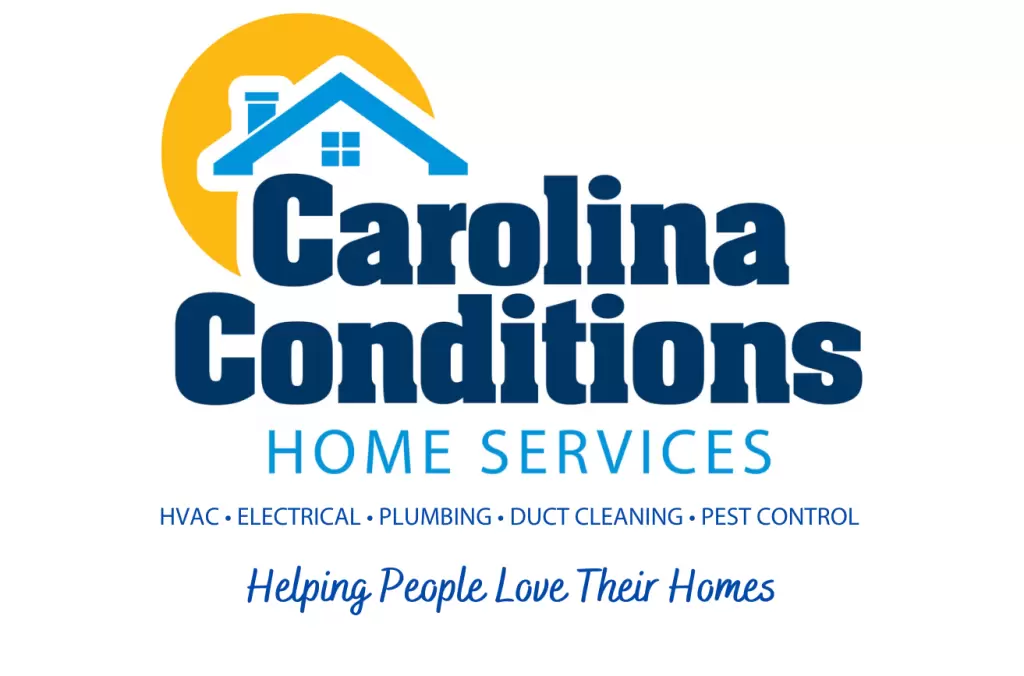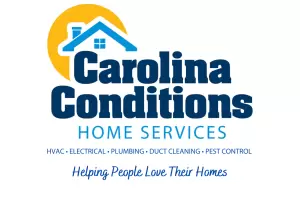Federal Tax Credits
How the Inflation Reduction Act Can Benefit You
The Inflation Reduction Act is a program designed to help homeowners save money on their energy bills. It contains a number of federal tax credit incentives for the installation of energy-efficient, approved home heating and cooling equipment. The program's aim is to persuade homeowners to update to a more energy-efficient HVAC system for their homes, but it can be tricky to know exactly how you qualify. The team at Carolina Conditions is delighted to assist. Read on to learn more about how you can save money and energy!
You Can Claim:
30% of project cost or $600 max amount credited
Eligible Products:
For split systems, ENERGY STAR certified equipment with SEER2 > 16 is eligible. All ENERGY STAR certified packaged systems are eligible.
Eligible Users:
Must be an existing home & your principal residence. New construction and rentals do not apply.
A principal residence is the home where you live most of the time. The home must be in the United States. It can include a house, houseboat, mobile home, cooperative apartment, condominium, and a manufactured home.
Effective Dates:
This tax credit is effective for products purchased and installed between January 1, 2023, and December 31, 2032.
Fine Print:
Under the tax code, eligible equipment must “meet or exceed the highest efficiency tier (not including any advanced tier) established by the Consortium for Energy Efficiency which is in effect as of the beginning of the calendar year.” The eligibility described above is consistent with this requirement.
You Can Claim:
30% of project cost or $2,000 max amount credited
Eligible Products:
For heat pumps, ENERGY STAR offers a general certification and a cold climate certification.
In general, all ducted heat pumps that have earned the ENERGY STAR label are eligible, as well as certified mini-split systems (non-ducted) with:
-
SEER2 > 16
-
EER2 > 12
-
HSPF2 > 9
Among the models that earn the ENERGY STAR Cold Climate designation, eligible systems are:
ducted with EER2 > 10
mini-splits with
-
SEER2 > 16
-
EER2 > 9
- HSPF2 > 9.5
Eligible Users:
Upgrades must be to an existing home & your principal residence. New construction and rentals do not apply.
A principal residence is the home where you live most of the time. The home must be in the United States. It can include a house, houseboat, mobile home, cooperative apartment, condominium, and a manufactured home.
Effective Dates:
This tax credit is effective for products purchased and installed between January 1, 2023, and December 31, 2032.
Fine Print:
The information provided here about Air-Source heat pumps that are eligible for the tax credit is the most current available. Currently, eligible equipment must “meet or exceed the highest efficiency tier (not including any advanced tier) established by the Consortium for Energy Efficiency which is in effect as of the beginning of the calendar year.” The eligibility requirements are subject to change based on the final CEE Criteria and the Internal Revenue Service (IRS).
You Can Claim:
30% of project cost or $600 max amount credited
Eligible Products:
Gas storage water heaters
ENERGY STAR certified models are eligible as follows: > 0.81 UEF for tanks less than 55 gallons and > 0.86 UEF for tanks greater than or equal to 55 gallons.
Tankless gas water heaters
ENERGY STAR models with > 0.95 UEF are eligible.
Eligible Users:
Must be an existing home & your principal residence. New construction and rentals do not apply.
A principal residence is the home where you live most of the time. The home must be in the United States. It can include a house, houseboat, mobile home, cooperative apartment, condominium, and a manufactured home.
Effective Dates:
This tax credit is effective for products purchased and installed between January 1, 2023, and December 31, 2032.
You Can Claim:
30% of project cost or $2,000 max amount credited
Eligible Products:
Heat pump water heaters that have earned the ENERGY STAR are eligible for this credit.
Eligible Users:
Must be an existing home & your principal residence. New construction and rentals do not apply.
A principal residence is the home where you live most of the time. The home must be in the United States. It can include a house, houseboat, mobile home, cooperative apartment, condominium, and a manufactured home.
Effective Dates:
This tax credit is effective for products purchased and installed between January 1, 2023, and December 31, 2032.
Fine Print:
Under the tax code, eligible equipment must “meet or exceed the highest efficiency tier (not including any advanced tier) established by the Consortium for Energy Efficiency which is in effect as of the beginning of the calendar year.” The eligibility described above is consistent with this requirement.
You Can Claim:
The following Residential Clean Energy Tax Credit amounts apply for the prescribed periods:
30% for property placed in service after December 31, 2016, and before January 1, 2020
26% for property placed in service after December 31, 2019, and before January 1, 2022
30% for property placed in service after December 31, 2021, and before January 1, 2033
26% for property placed in service after December 31, 2032, and before January 1, 2034
22% for property placed in service after December 31, 2033, and before January 1, 2035
Eligible Products:
Qualified geothermal heat pump property:
Equipment which:
(1) uses the ground or groundwater as a thermal energy source (to heat), or as a thermal energy sink (to cool) a home, and
(2) is ENERGY STAR certified.
Qualified geothermal heat pump property expenditure:
An expenditure for qualified geothermal heat pump property installed on or in connection with the taxpayer's residence.
Eligible Users:
Existing homes and new construction qualify. Both principal residences and second homes qualify. Rentals do not qualify.
This system must be installed in connection with a dwelling unit located in the United States and used as a residence by the taxpayer. The home served by this system does not have to be the taxpayer's principal residence.
Effective Dates:
December 31, 2016 - January 1, 2035
You Can Claim:
30% of project cost or $600 max amount credited
Eligible Products:
Any improvement to, or replacement of, a panelboard, sub-panelboard, branch circuits, or feeders which:
-
is installed in a manner consistent with the National Electric Code,
-
has a load capacity of not less than 200 amps,
-
is installed in conjunction with, and enables the installation and use of:
-
any qualified energy efficiency improvements, or
-
any qualified energy property (heat pump water heater, heat pump, central air conditioner, water heater, furnace or hot water boiler, biomass stove or boiler)
Eligible Users:
Must be an existing home & your principal residence. New construction and rentals do not apply.
A principal residence is the home where you live most of the time. The home must be in the United States. It can include a house, houseboat, mobile home, cooperative apartment, condominium, and a manufactured home.
Effective Dates:
This tax credit is effective for products purchased and installed between January 1, 2023, and December 31, 2032.
Annual Limits on Energy-Efficient Home Improvement Tax Credits
In addition to limits on the amount of credit you can claim for any particular equipment installation or home improvement, there are annual aggregate limits. The overall total limit for an efficiency tax credit in one year is $3,200. This breaks down to a total limit of $1,200 for any combination of home envelope improvements (windows/doors/skylights, insulation, electrical) plus furnaces, boilers and central air conditioners. Any combination of heat pumps, heat pump water heaters and biomass stoves/boilers are subject to an annual total limit of $2,000.
(Note: ENERGY STAR certified geothermal heat pumps are eligible for a separate tax credit and not counted against these limits.)
How Can I Maximize my Tax Credits?
Given the way the annual aggregate limits are structured, it may be prudent to spread your improvements over a few years. If your heating or cooling system is old, and you are considering a new air source heat pump, it is always wise to optimize your attic insulation first, so you don’t pay for more heating and cooling than you actually need. Making these upgrades together in one year would allow you a tax credit of up to $1,200 for the insulation and up to $2,000 for the heat pump. Similarly, you could combine a heat pump installation with window/door replacements. In that scenario, the $2,000 credit for the heat pump could be combined with tax credits up to $600 total for the windows/skylights plus $500 for two or more doors. If you replace your water heater the following year, you would be eligible for another 30% tax credit, up to $2,000 plus up to $600 if you need an electric panel upgrade to accommodate the new water heater.
Carolina Conditions is happy to help walk you through the federal tax credit information. Give us a call today at 803-233-7172 to get started on saving both money and energy.

